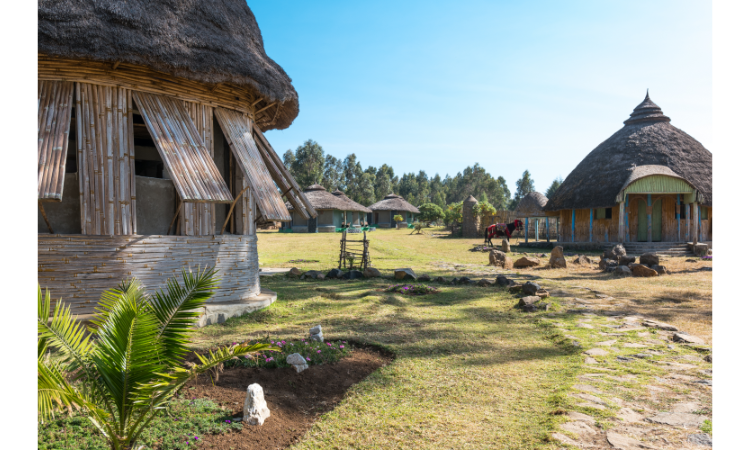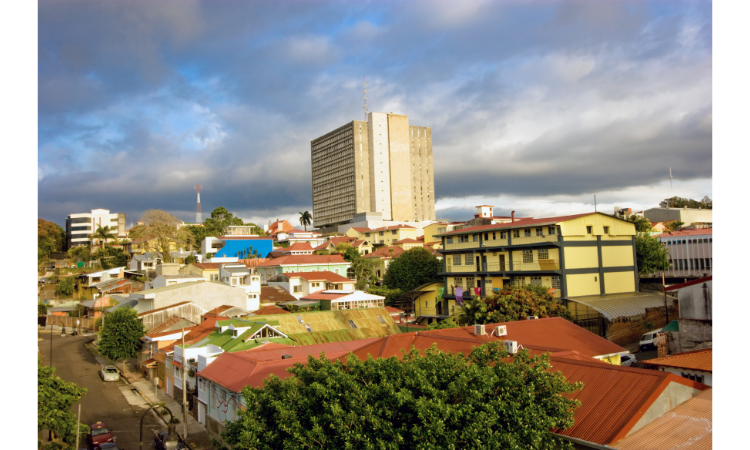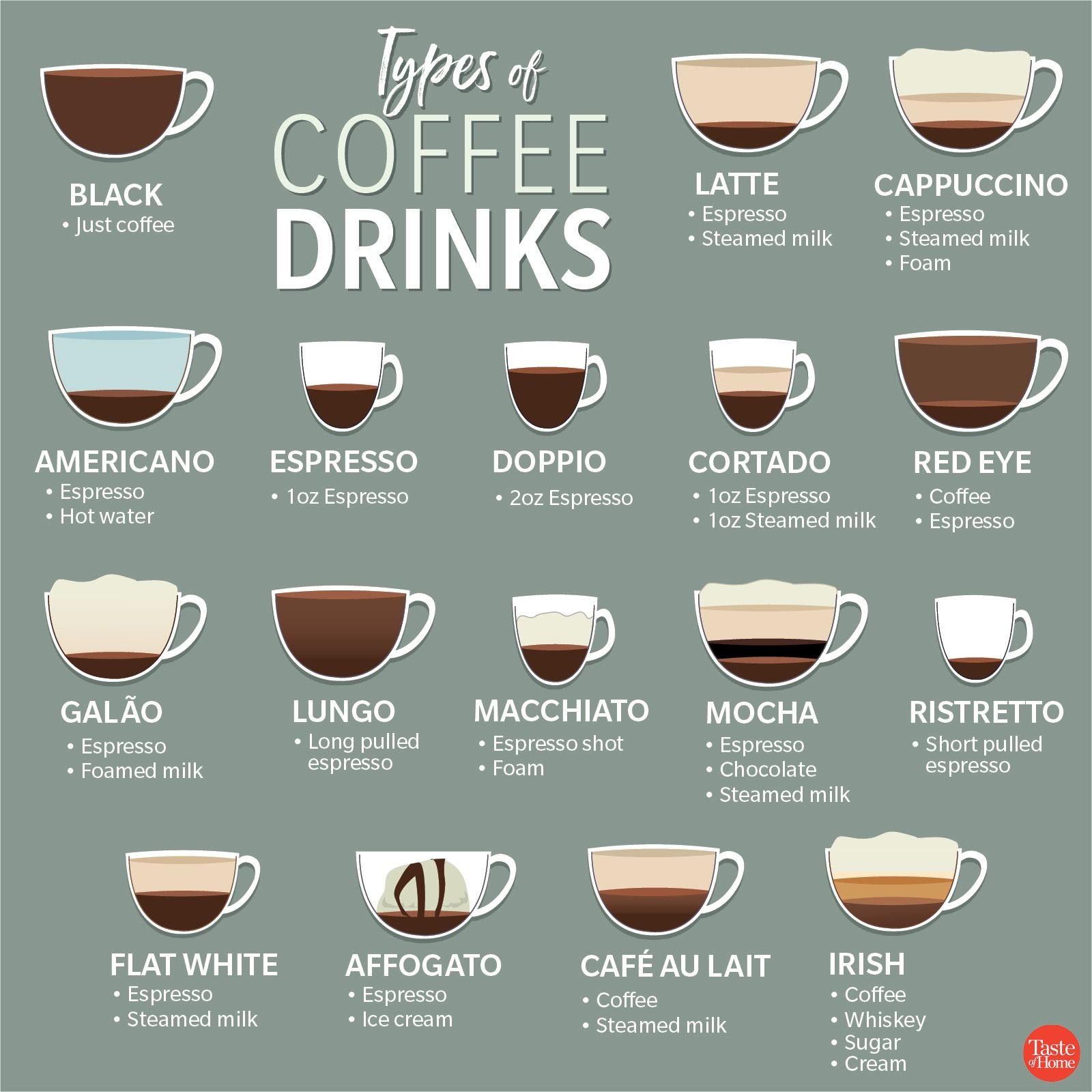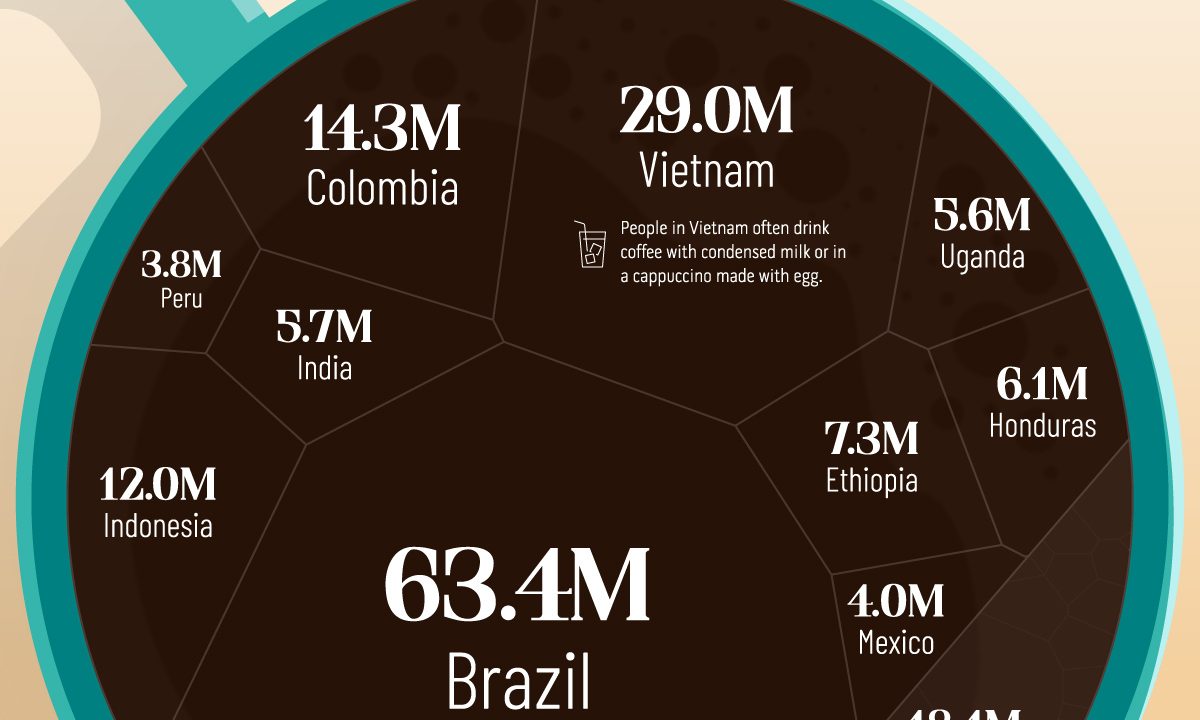Coffee is much more than a morning pick-me-up or a way to get through the afternoon slump. It’s an experience, a culture, and for many, a way of life. With the burgeoning interest in gourmet coffee across the globe, many coffee aficionados have taken it upon themselves to seek out the crème de la crème of coffee beans. So, which country has the best quality coffee? Let’s embark on a flavorful journey to discover the top 5 countries with high-quality coffee.
Ethiopia

Heralded as the birthplace of coffee, Ethiopia offers beans that are as diverse in flavors as the country’s landscapes. From the fruity and wine-like Sidamo to the earthy and full-bodied Harrar, Ethiopian coffees are complex and often feature vibrant notes of berries and citrus.
Why Ethiopia?
- Historical Relevance: Coffee was discovered here in the legendary tale of Kaldi and his dancing goats.
- Diversity: Ethiopia boasts various coffee regions, each with its unique taste profile.
Looking to take a coffee journey to Ethiopia? Esanchar Travel Agency is your ideal partner. They offer ticket packages and visa services worldwide, ensuring a seamless travel experience.
Colombia

When many think of coffee, Colombia often comes to mind. With its vast coffee-growing regions like Antioquia and Huila, the country produces beans known for their bright acidity and caramel sweetness.
Why Colombia?
- Consistency: Colombian coffees are famous for their balanced flavor profiles.
- Global Recognition: Colombia consistently ranks among the top 10 countries with the best coffee.
Brazil

As one of the world’s leading coffee exporters – often topping the top 20 countries by highest exports – Brazil is a coffee powerhouse. Its beans are often nutty, chocolaty, and with a hint of spice.
Why Brazil?
- Scale: Brazil produces a third of the world’s coffee.
- Versatility: The country’s beans are a favorite for both espresso blends and single-origin offerings.
Kenya

Kenyan coffee is a favorite among baristas and coffee enthusiasts for its bright acidity, full body, and wine-like fruitiness. The AA beans from regions like Kirinyaga and Nyeri are often seen as the pinnacle of quality.
Why Kenya?
- Unique Taste: Kenyan beans are known for their berry-forward flavors and sharp acidity.
- Auction System: Kenya’s unique coffee auction system ensures the highest quality of life in the country for its producers.
Costa Rica

A treasure in Central America, Costa Rican coffee is characterized by its light, bright acidity, and hints of tropical fruits. The Tarrazú region, in particular, is celebrated for beans that showcase a perfect balance of sweetness, acidity, and body.
Why Costa Rica?
- Micro-lots: Costa Rican farms often produce small batches of specialty beans, ensuring top-tier quality.
- Sustainability: The country is a pioneer in sustainable coffee farming.
What are the qualities of the best coffee?

Coffee is a deeply personal experience, and while one person may swear by a particular type of bean or brew, another might have a totally different preference. However, there are certain qualities that coffee connoisseurs tend to look for when determining the quality of a coffee bean or brew. Here are some universally acknowledged characteristics of the best coffee:
Aroma: Before the coffee even hits your palate, your nose will tell you a lot about its quality. The best coffee often has a strong, pleasing aroma that can range from fruity and floral to nutty or chocolatey, depending on the bean and roast.
Flavor: A top-notch coffee should have a taste that matches or complements its aroma. Common flavor notes include fruity, nutty, chocolaty, spicy, floral, or even winey.
Acidity: The best coffees have a bright and tangy quality, often described as “acidity.” This doesn’t mean they taste sour like vinegar but instead have a vivacious, sparkling quality.
Body: This refers to the weight or thickness of the coffee on your palate. A coffee with full body may feel creamy, like whole milk, while a light-bodied coffee might feel more like skim milk or even water.
Balance: No single trait overshadows the others. The coffee’s various flavors are in harmonious proportion.
Complexity: The best coffees will tantalize your palate with a variety of flavors and aromas, evolving as you sip.
Cleanliness of Taste: This term refers to the clarity and purity of flavors in the coffee. A coffee with a clean taste will allow you to easily discern its different flavor notes.
Aftertaste (or Finish): After swallowing, coffee can leave a lingering taste, which can be either pleasant or unpleasant. Quality coffee often has a pleasant aftertaste, which makes you want to take another sip.
Sweetness: Good coffee should have a certain degree of sweetness, which balances out its acidity. This sweetness makes the coffee palatable and pleasant without any added sugar.
Uniformity: From the first sip to the last, the flavor should be consistent. If you’re sampling beans from a particular batch, every bean should offer a similar flavor profile.
Lack of Defects: Top-quality coffee should be free from any noticeable defects, such as a moldy, rubbery, or overly fermented taste.
Freshness: Whether you’re dealing with beans or the brew, freshness is key. Coffee beans should be used within a month of being roasted and within minutes of being ground. The brew should be consumed shortly after being made to enjoy its peak flavor.
Sustainability: While not a taste or aroma characteristic, many coffee lovers prioritize beans that are grown using sustainable farming practices and that offer fair compensation to growers.
It’s worth noting that different cultures and individuals might prioritize different characteristics, and these preferences can evolve over time. While the above qualities are generally appreciated by most coffee aficionados, the “best” coffee is truly in the eye (or rather, the mouth) of the beholder.
Different varieties of coffee
Coffee is enjoyed by millions of people worldwide, and its preparation methods have evolved in various cultures, leading to a plethora of different coffee beverages. Here’s a list of some popular types of coffee, both in terms of preparation and the drinks themselves:
Based on Preparation

Espresso: A concentrated coffee brewed by forcing a small amount of nearly boiling water through finely ground coffee beans.
Drip Coffee: Made by dripping boiling water over ground coffee, which is contained in a filter.
French Press (or Plunger Pot): Coarse coffee grounds are steeped in boiling water and then separated by pressing down a metal or plastic mesh sieve through the mixture.
Aeropress: A device that brews coffee by pressing hot water through coffee grounds using air pressure.
Cold Brew: Coffee grounds are steeped in cold water for an extended period (typically 12-24 hours), then filtered.
Percolator: Ground coffee is placed above a water chamber. As the water heats up, it’s forced up a tube and over the coffee grounds, with the brewed coffee seeping back down to the bottom chamber.
Moka Pot (or Stovetop Espresso Maker): Water in the bottom chamber boils and is pressurized, forcing it through ground coffee into the top chamber.
Turkish Coffee: Finely ground coffee, water, and sugar are combined in a special pot called a ‘cezve’ and brewed over low heat.
Based on Drinks

Americano: Espresso with added hot water, making it similar in strength to drip coffee but different in taste.
Latte: Espresso combined with steamed milk and topped with a small amount of foam.
Cappuccino: Similar to a latte, but with more foam and less steamed milk.
Macchiato: Espresso with just a small amount of foamed milk.
Mocha: Espresso combined with chocolate syrup and steamed milk, usually topped with whipped cream.
Cortado: Espresso mixed with a small amount of warm milk.
Flat White: Originating from Australia/New Zealand, it’s similar to a latte but made with microfoam (steamed milk with fine, velvety bubbles).
Ristretto: A shorter espresso shot that is more concentrated.
Lungo: An extended espresso shot, making it less concentrated.
Affogato: A scoop of vanilla ice cream or gelato topped with a hot espresso shot.
Espresso Con Panna: Espresso topped with whipped cream.
Red Eye: Drip coffee with an espresso shot, making it stronger.
Iced Coffee: Regular coffee that’s cooled and served over ice.
Nitro Coffee: Cold brew coffee infused with nitrogen, giving it a creamy texture and a frothy head.
Frappuccino: A trademarked drink by Starbucks, it’s a blend of coffee or crème base with different flavors and ice, often topped with whipped cream.
Vienna Coffee: Two espresso shots topped with whipped cream, sometimes sprinkled with cocoa.
Breve: Espresso with half milk and half cream.
Remember, the world of coffee is vast, and this list just scratches the surface. Many countries and regions have their unique coffee preparations and drinks, adding to the global tapestry of coffee culture.
Tips for Coffee Travelers
Embarking on a coffee exploration journey requires more than just packing a bag and booking a ticket. Here are some expert tips for those looking to traverse the globe in pursuit of the perfect brew:
Research Coffee Seasons: Coffee harvest seasons vary by region. Plan your trip during the harvest time to witness the entire bean-to-cup process.
Visit Local Cafés: While plantation tours are enlightening, visiting local cafés offers insights into regional coffee preparations and traditions.
Engage with the Locals: Coffee is as much about community as it is about the beans. Strike up conversations with local farmers, baristas, and café owners.
Keep an Open Palate: Different regions have distinct coffee profiles. Be open to trying different brewing methods and flavors.
Why Coffee Quality Matters
Coffee, for many, isn’t just about caffeine—it’s about flavor, aroma, and the experience of savoring a well-made cup. The highest quality of life in a country can often be reflected in its coffee culture. A nation that values quality in life frequently values quality in its produce.
Economic Implications: High-quality coffee often fetches higher prices on the global market, benefiting farmers and the national economy.
Cultural Significance: In many countries, coffee ceremonies and traditions are integral to social interactions and community bonding.
Environmental Impact: Quality coffee often comes from sustainable farming practices, which have a positive impact on the environment.
Conclusion
The quest for the finest coffee bean can take you across continents, through lush landscapes, and into the heart of cultures that have revered this dark elixir for centuries. Whether you’re passionate about the coffee quality by country or you’re intrigued by the top 5 countries’ quality of life, the world of coffee is vast and fascinating.
Ready to take your love for coffee international? Don’t miss out on a journey with the best. Book your coffee exploration with Esanchar Travel Agency for a taste adventure like no other. After all, life is too short for bad coffee and lackluster travel experiences. Cheers to the next brew and the journey ahead.
